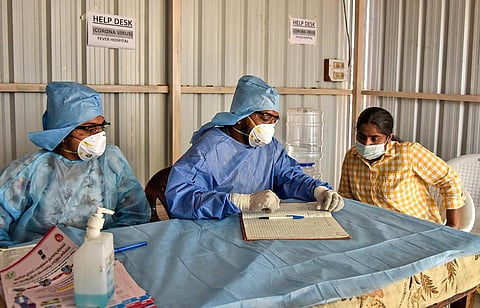

The economic consequences of the coronavirus on India are now coming down the pike.
Until now, the dominant view was that its effect will be modest as India isn't deeply dependent on the global supply chains, which in turn are interconnected with China.
Barring a few sectors like pharmaceuticals and electronics, India, unlike say Australia or the US, wasn't expected to face a supply-side issue with China locking its doors on global trade. A supply-side issue occurs when companies have trouble accessing credit or raw materials to produce goods and services to sell.
But everything changed with the number of cases in India rising to 29 on Wednesday.
The deadly virus is here and real and we don't know just how big the health scare will snowball into. And since we and the world have no medical weapon to deal with it, the only thing to do, besides quarantining the affected, is to ask everyone else to travel less and stay indoors.
As it is, schools are being closed in parts of the country, companies are asking employees to work from home and one may not be surprised if advisories are issued to minimize mass gatherings be it sports or political events or even festive congregations such as Holi. Moreover, fear of contracting the virus will slow down social activities like shopping or dining out, going to the movies, and travelling.
In other words, voluntary shutting down of discretionary economic activity is an essential part of the healing process, but it can potentially develop into a demand-side issue and hit the economy hard. Why? Because private consumption accounts for about 60 per cent of the Indian economy and much of the blame for the prevailing slowdown is pinned down on weak consumer demand. Effectively, the virus outbreak could land a one-two punch on aggregate demand and, in the process, on the country's economic growth.
In fact, Finance Minister Nirmala Sitharaman even sent out an ominous signal last week stating the virus outbreak would emerge as a challenge for India if issues were not resolved in three weeks. "There is no need to press the panic button because of the coronavirus epidemic but the outbreak will be a challenge if issues do not get resolved in three weeks," Sitharaman said at an event.
How can it worsen? Just consider the travel industry.
Tourists are money, but given the rapid spread of the virus (so far 76 countries have reported cases), potential travel restrictions can kick in, transmitting financial distress to airlines, hoteliers and other service providers. For context, the services sector alone contributes over 50 per cent to India's GDP.
Precisely to stem such a fallout, the US Federal Reserve deployed an emergency rate cut of 50 bps (0.5 per cent) on Tuesday. This is only the eighth such out-of-turn policy cut for the Fed since 1991. The last one was in 2008.
Similarly, the Bank of Australia and Bank of Malaysia have already cut rates and more central banks are expected to do so in the coming days. Our own Reserve Bank of India too expressed its readiness to act at a moment's notice.
That said, interest rates are already jammed against zero and negative in some countries like Japan. So clearly, fresh rate reductions may soothe markets from panicking but are no balm to fix halted supply chains or limiting the virus spread. In other words, ultra-loose monetary policy may at best stimulate sentiment, but not national output, which is why the OECD on Monday warned that global growth could be negative in the second quarter unless the virus is contained.